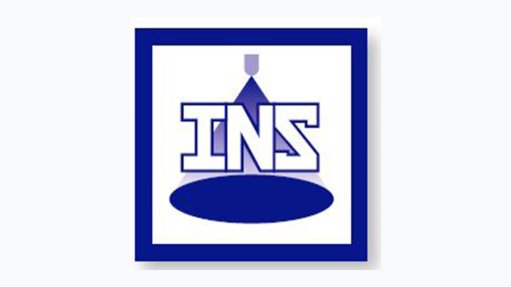Gold to the future
Doctor Emmett Brown: “No! It cannot be; I just sent you back to the Future!” Marty McFly: “No, I know; you did send me back to the Future. But I am back – I am back from the Future”. Doctor Emmett Brown: “Great Scott!”
I had a McFly moment on July 4, when the governor of the Reserve Bank of Zimbabwe (RBZ) issued a press release pertaining to the resolution of the bank’s monetary policy committee to introduce gold coins into the market as a store of value, passed on June 22. ‘A store of value’ is an asset that maintains its value instead of depreciating.
According to www.bullionbypost.co.uk, gold coins were first produced more than 2 000 years ago in Lydia, now part of western Türkiye. Although gold had been used earlier as a means of exchange, this was the first time that the metal was formed into coins.
The Zimbabwean gold coin will be called the Mosi-Oa-Tunya gold coin, which translates to The Smoke Which Thunders, the precolonial name of the famous Victoria Falls.
The coin has eight salient features and characteristics. These include a weight of one troy ounce, purity of 22 ct, a serial number for each coin, and the issuance of a bearer ownership certificate upon purchasing. The buyer or holder may opt to place the coin in the custody of bankers of his or her choice, in which case a safe custody certificate/receipt will also be issued. Further, the coin will have liquid-asset status, which means it can be easily converted into cash and is tradable locally and internationally. The RBZ added that the coin may also be used for transactional purposes and that it will have prescribed asset status, thus enabling institutional investors to use it to meet regulatory requirements for prescribed asset investments. The coin can be used as security for loans and credit facilities and, at the instance of the holder, the bank will buy the coin back.
The press statement added: “The gold coins will be available for sale to the public from July 25 in both the local currency (ZW$) and US dollars (and other foreign currencies) at a price based on the prevailing international price of gold and the cost of production. “The coins will be sold through the RBZ and its subsidiaries, [as well as] local banks and selected international banking partners. Entities selling the coins shall be required to apply Know Your Customer principles.”
Still not convinced about going back to the future? Well, consider the ‘troy once’ – the first characteristic of the new gold coins. According to www.royalmint.com, in medieval times, when traders were bartering for goods, all precious metals were weighed in pounds and ounces using the troy system.
So, how did Zimbabwe get back here? Its issuing of the gold coins as legal tender is an attempt to control soaring inflation, which has been responsible for the weakening of the ZW$. In addition, the Zimbabwe government is also contemplating making the US dollar its legal tender for the next five years, in order to boost confidence. The US dollar is, in addition to five US territories, the official currency of 11 countries. It is still considered to be the world’s ‘reserve currency’.
Some readers may recall the ‘gold standard’, a monetary system where the standard economic unit of account was based on a fixed quantity of gold held by central banks. This meant that you could take a banknote and exchange it for actual gold. This system ended abruptly when the US unilaterally terminated the convertibility of the US dollar to gold, thus effectively ending the Bretton Woods system, and introducing inflation to the world. The Bretton Woods institutions tend to be the ‘lenders of last resort’ to the South African government.
Article Enquiry
Email Article
Save Article
Feedback
To advertise email advertising@creamermedia.co.za or click here
Comments
Press Office
Announcements
What's On
Subscribe to improve your user experience...
Option 1 (equivalent of R125 a month):
Receive a weekly copy of Creamer Media's Engineering News & Mining Weekly magazine
(print copy for those in South Africa and e-magazine for those outside of South Africa)
Receive daily email newsletters
Access to full search results
Access archive of magazine back copies
Access to Projects in Progress
Access to ONE Research Report of your choice in PDF format
Option 2 (equivalent of R375 a month):
All benefits from Option 1
PLUS
Access to Creamer Media's Research Channel Africa for ALL Research Reports, in PDF format, on various industrial and mining sectors
including Electricity; Water; Energy Transition; Hydrogen; Roads, Rail and Ports; Coal; Gold; Platinum; Battery Metals; etc.
Already a subscriber?
Forgotten your password?
Receive weekly copy of Creamer Media's Engineering News & Mining Weekly magazine (print copy for those in South Africa and e-magazine for those outside of South Africa)
➕
Recieve daily email newsletters
➕
Access to full search results
➕
Access archive of magazine back copies
➕
Access to Projects in Progress
➕
Access to ONE Research Report of your choice in PDF format
RESEARCH CHANNEL AFRICA
R4500 (equivalent of R375 a month)
SUBSCRIBEAll benefits from Option 1
➕
Access to Creamer Media's Research Channel Africa for ALL Research Reports on various industrial and mining sectors, in PDF format, including on:
Electricity
➕
Water
➕
Energy Transition
➕
Hydrogen
➕
Roads, Rail and Ports
➕
Coal
➕
Gold
➕
Platinum
➕
Battery Metals
➕
etc.
Receive all benefits from Option 1 or Option 2 delivered to numerous people at your company
➕
Multiple User names and Passwords for simultaneous log-ins
➕
Intranet integration access to all in your organisation














